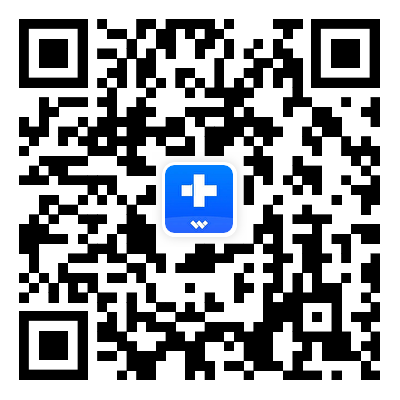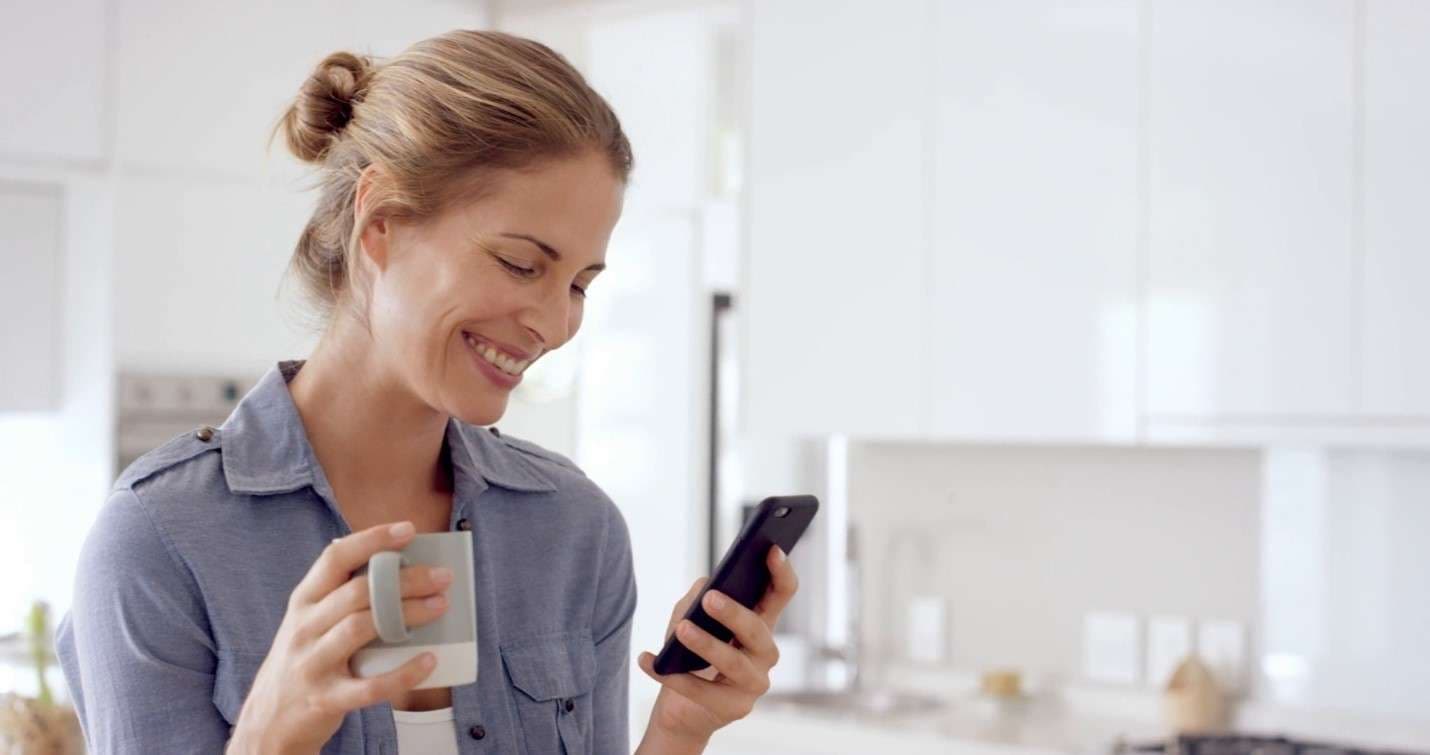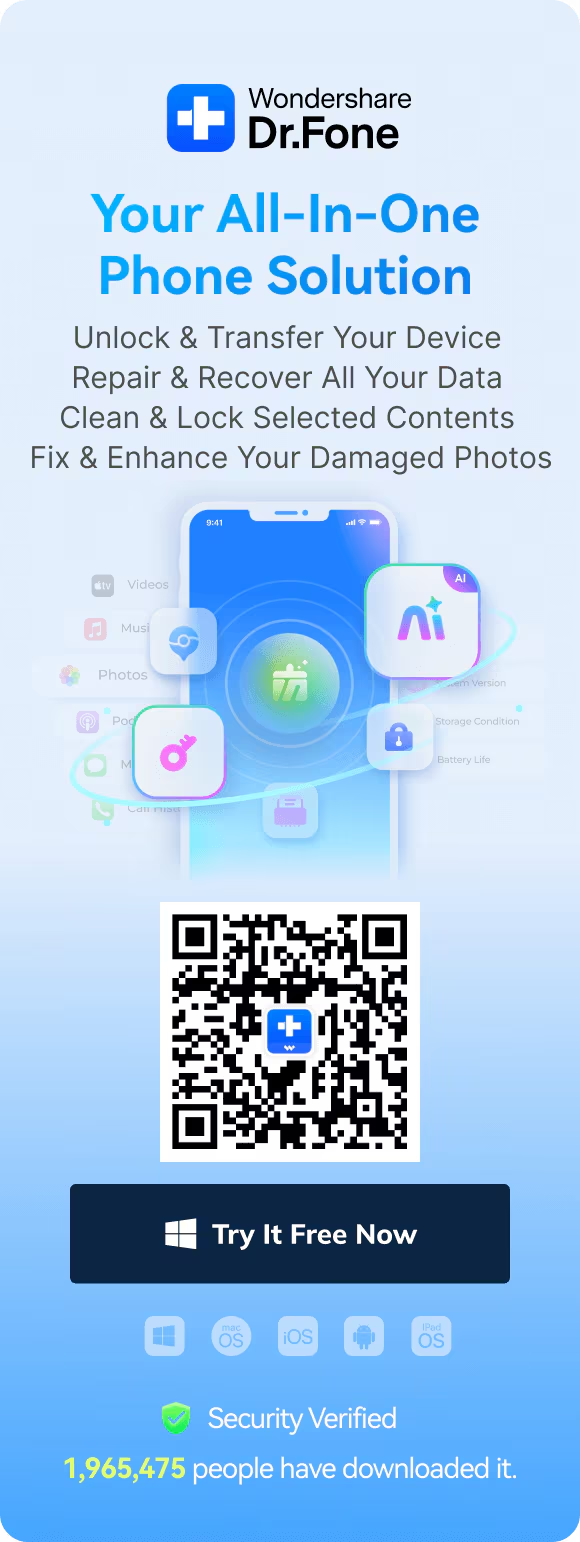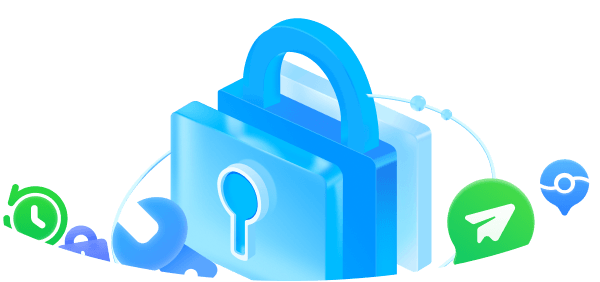Phones have become so important in the modern digital world that they consume much more of our time than we give them credit for. We spend much of our day on screens, from work to socializing. However, excessive phone usage may affect mental, physical, and productivity.
You are not alone if you want to get out of this cycle and learn how to get off the phone. A healthy balance can be achieved with the correct tools and methods. This article will discuss phone addiction, its causes, and how Dr.Fone - App Lock (iOS) and mindful behaviors may help you reclaim control.
In this article
Part 1: Understanding the Problem of Phone Addiction
Phone addiction recovery is difficult for a reason. Technology is meant to keep you hooked. One must grasp the psychological traps and actual effects of excessive screen time to address this.
Why Is It Hard to Put Down Your Phone?
- Dopamine Loop
- Fear of Missing Out (FOMO)
- Emotional Triggers
Apps use the brain's reward system. Every like notification or compliment on your post releases dopamine, boosting pleasure. This positive reinforcement keeps you coming back even when you want to quit.
Sharing videos of one's life on social media increases FOMO. Constant exposure makes consumers nervous about missing trends, events, and chances, sucking them into scrolling.
Phones let people escape boredom, tension, and loneliness. Mindless scrolling as a momentary diversion reinforces the habit.
The Consequences of Excessive Phone Usage.
- Mental Health Implications
- Physical Issues
- Loss of productivity
Too much phone use causes tension, worry, and inadequacy. Constant social media comparisons may cause melancholy and poor self-esteem.
Too much screen time causes eye strain, neck discomfort, and sleep disturbances. Poor posture from gadget use might cause long-term health issues.
Phones distract from important duties, causing procrastination and lost time. This time management error can hurt your job, school, and personal development.
Part 2: Using App Locks to Help You Put Your Phone Down
App locks help you break away from phone addiction, which might be difficult. Using these tools, you may restrict distractions, develop healthy habits, and finally answer the question, "How to you get off my phone?"
What are App Locks, and how do they work?
App locks are strong tools for restricting access to certain applications and efficiently managing screen time. These technologies place obstacles between you and your most enticing apps, allowing you to put your phone down without entirely disconnecting. App locks are available in a variety of styles to meet different needs:
- Blocking programs: Instantly lock programs that take too much time, such as social media or gaming.
- Scheduling use: Set application time limitations to ensure even daily use.
- Screen usage Management: Track and limit your total screen usage to preserve productivity and awareness.
With these features, app locks help interrupt the cycle of compulsive phone usage by addressing its core causes, emotional triggers, a lack of self-discipline, and frequent alerts.
Best App Lock Tool to Help You Get Off Your Phone
Dr.Fone App - App Lock (iOS) stands out in recovering your concentration and improving your time management. This tool is designed to be flexible and easy to use, with sophisticated capabilities targeted to both personal and family requirements. Whether you're thinking, "How to get off your phone?" or want to teach your children healthier behaviors, Dr.Fone has you covered.Dr.Fone App - App Lock (iOS)
Enhanced App Security: Lock/Hide Apps Based on Time and Location
- Lock apps to prevent accidental deletions or downloads.
- Hide apps from the home screen for enhanced privacy.
- Face ID/PIN code protection for secure access.
- Supports iOS 16 and above.
Key Features of Dr.Fone App - App Lock
- Comprehensive App Locking Options
- Geo-Based Locking: Apps are automatically locked or hidden when you enter particular places, such as schools or companies. This function guarantees that you stay focused when working or studying.
- Time-Based Locking: Create exact schedules to prevent app use at certain times, such as sleep or work hours.
- Group Locking: Hide or lock up to 50 applications per group, with an infinite total app selection, making it simple to handle big app collections.
- Advanced Privacy Protection.
- Sensitive App Locking: To protect personal data, lock applications such as WhatsApp, Instagram, and Facebook.
- True App Hiding: Unlike iOS's built-in app-hiding tools, Dr.Fone entirely hides applications, preventing them from displaying in directories or searches.
- Secure unlocking: Face ID provides smooth access and ensures only you can open hidden or locked applications.
- Enhanced Parental Control
- Child-Friendly Restrictions: Prevent children from using unsuitable or time-wasting applications such as social networking or gaming.
- Secure Payment Protection: To prevent accidental purchases, lock payment applications like PayPal or the App Store.
- Self-Discipline Tools for Productivity
- Distraction-Free Focus: To stay focused at work, lock applications such as TikTok, Instagram, or YouTube.
- Customized Usage Limits: Set tailored constraints based on your daily priorities to ensure you spend your time wisely.
- Accidental Deletion Prevention
- App and Data Security: Locked applications stay secure, preventing essential data and settings from being accidentally deleted.
Dr.Fone is excellent at locking and concealing applications with customizable options:
Dr.Fone respects your privacy:
This function is quite useful for families:
Designed for people looking to remain productive:
It might not be very pleasant to lose crucial app data accidentally. Dr. Fone ensures:
How to Use Dr.Fone App - App Lock for iOS Steps Guide
Dr.Fone App - App Lock reduces distractions and improves phone control. How to use:
01of 05Download and Launch the App
Start by installing Dr.Fone App from the App Store. Launch the App and tap the blue AI Tools Toolbox at the bottom to use its capabilities.
02of 05Access App Lock Settings
Select "App Lock" from the Discover tab. Start locking choices using on-screen instructions.

03of 05Create App Groups
Click "Please Add a group first" to arrange app limitations. Set a group name, limit applications, and click "Save."

04of 05Configure Locked and Private Modes
Choose Locked Mode (grayed-out, unavailable applications) or Private Mode (hidden apps from the home screen). Application and activation of app group mode.

05of 05Set Up Face ID/PIN Code
Add a "Face ID" or a "PIN" for further protection. App lock settings are restricted to authorized users.
Tips: Enable Geographic Restrictions or Time Restrictions
You can set a map "Restriction Zone" for geo-based locking,or lock and hide the restriction based on time.

Why Choose Dr.Fone App - App Lock Over Other Tools?
Unlike iOS's built-in app-hiding tools, Dr.Fone ensures that hidden applications remain invisible. These applications will not surface on your home screen or in search results, keeping them completely private.
Furthermore, Dr.Fone blocks alerts for closed or hidden applications, guaranteeing that all distractions are erased. Its versatility, which includes geo-based and time-based locking, makes it an excellent solution for anybody wishing to put their phone down efficiently.
While Dr.Fone does not yet provide daily use data or remote monitoring, its strong security features, simplicity of use, and sophisticated locking settings make it the ideal answer for anybody wondering, "How to get off your phone?"
Part 3: Habits and Mindset to Complement App Locks
App locks are useful in reducing phone addiction when combined with the proper behaviors and mindset. This practical guide will help you manage your screen time.

Practical Tips to Help You Put Down Your Phone
| Strategy | Details | Why It Works |
| Design a Phone-Free Zone | Establish areas like bedrooms or dining tables where phones are not allowed. | Encourages meaningful interactions and improves focus on tasks or rest. |
| Adopt Tech-Free Rituals | Start and end your day with phone-free routines, such as journaling or meditating. | Promotes mindfulness and reduces dependency on your phone for stimulation. |
| Mindful App Usage | Evaluate which apps truly add value and uninstall the ones that don't. | Prevents unnecessary distractions and helps declutter your digital environment. |
The Power of Accountability
| Action | Details | Why It Helps |
| Enlist Support | Ask friends or family to encourage your efforts and monitor your progress. | Creates a support system, making it harder to give up on your goals. |
| Share Goals | Post your screen-time reduction progress or intentions online. | Builds external Motivation through social validation and responsibility. |
Digital Detox Challenges
| Step | Details | Why It's Effective |
| Set Small Goals | Begin with a manageable goal, like one phone-free hour daily. | Makes the process less overwhelming and builds confidence over time. |
| Gradual Detox | Designate weekends or specific days for phone-free activities. | Allows incremental changes, easing the transition to reduced screen time. |
| Use App Locks Strategically | Reinforce detox periods by locking distracting apps during critical hours. | Combines behavior changes with technology to strengthen your commitment. |
Part 4: Overcoming Common Challenges with App Locks
App locks help manage screen time, but they have drawbacks. Address frequent impediments and keep on pace to reduce phone reliance.
What If You Bypass the App Locks?
Even with app locks, you may want to bypass them. This is normal when you want to check your phone. However, this demands awareness and preparation:
- Recognize Loopholes: Bypassing app locks inhibits progress toward objectives.
- Combine with Habits: Combine app locks with phone-free zones and accountability measures. Lock applications and hide your phone at work.
- Reflect on Progress: Give yourself a tiny, pleasant reinforcement each time you resist the impulse to circumvent the locks.

When Motivation fades
Maintaining phone use reduction enthusiasm may be difficult, particularly when results are delayed. How to restore momentum:
- Revisit Your Goals: Break them down into smaller, more manageable actions. Try 30 minutes if three hours a day seems too much.
- Adjust strategies: Determine what works and adjust what doesn't. Maybe app locks should cover various hours or target new applications.
- Inspire Yourself: Read or watch phone addiction recovery stories. Their challenges and successes may inspire them.
Conclusion
You'll need a mix of app lock tools and a personal drive to reduce excessive phone use. App locks like Dr.Fone App - App Lock (iOS) help you regulate screen time and form better habits. You may recover control of your digital life by locking or concealing distracting applications, imposing time limits, and even using location-based limitations.
Technology alone is not enough. Building phone-free habits, practicing mindfulness, and establishing realistic objectives are all important. Putting down your phone is about reclaiming time for yourself and your family, not simply minimizing screen time. To live a balanced and fulfilled life, start small, be persistent, and employ these tools and tactics.



























Jane Lunes
staff Editor
Generally rated4.5(105participated)